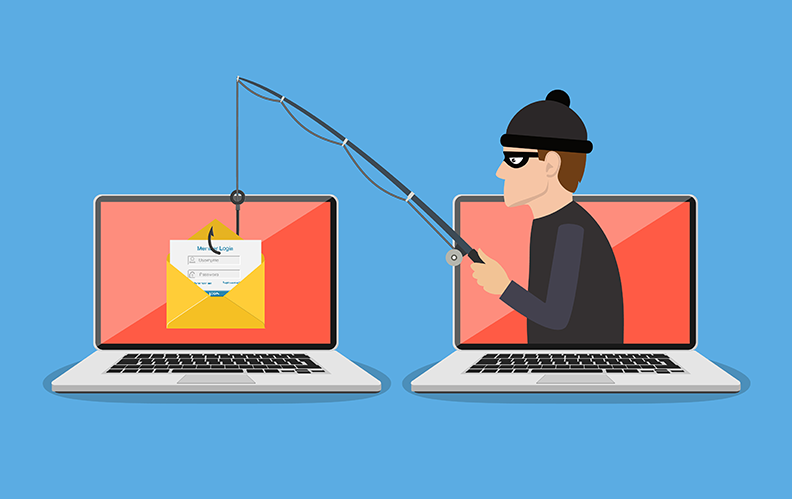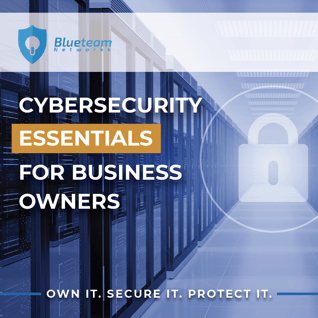5 min read
4 Cybersecurity Predictions for 2024 (You Should be Planning For)
Cybersecurity is a constantly evolving field. There are new threats, technologies, and opportunities developing all the...
Learn more about the potential negative consequences of a ransomware attack on an organization.
This guide has everything you need to understand what ransomware is and what you can do about it.
Download
Keeping track of cybersecurity threats is a challenging but necessary task for organizations worldwide. In the US, ransomware attacks have proven to be one of the most significant threats to organizations in recent months. In 2020, 68% of US organizations admitted to losing money following a ransomware attack that year, most of which took place via phishing emails.
If you’re concerned about the operations, reputational, and financial dangers posed by ransomware, don’t panic. We’ve put together a quick guide to keeping your business safe. Read on to get a better understanding of ransomware in laymen's terms.
Keeping track of cybersecurity threats is a challenging but necessary task for organizations worldwide. In the US, ransomware attacks have proven to be one of the most significant threats to organizations in recent months. In 2020, 68% of US organizations admitted to losing money following a ransomware attack that year, most of which took place via phishing emails.
If you’re concerned about the operations, reputational, and financial dangers posed by ransomware, don’t panic. We’ve put together a quick guide to keeping your business safe.
Ransomware is malicious software designed to harness control of a victim’s data until they pay a ransom. Some cybercriminals simply block access to the data, while others threaten to publish sensitive client information and potentially ruin the target company’s reputation. The sum demanded may vary widely, with criminals sometimes demanding huge ransoms from big companies with large cash reserves, but any size business can be a target.
Ransomware uses a technology known as asymmetric encryption. This cryptography uses two different keys to encrypt and decrypt a file, with the attacker storing the key needed to decrypt the file on their server. This key is only made available once money has been transferred (although this is not guaranteed). Most cybercriminals demand victims pay in a cryptocurrency such as Bitcoin to reduce the likelihood of getting caught.
Use this checklist to get started on evaluating your cybersecurity posture.
Get it nowOne of the most common infection routes for ransomware is a practice known as phishing. Phishing involves sending fraudulent emails in a bid to steal data from victims. These emails are designed to trick recipients into handing over personal details or downloading malware via a URL or attachment.
Ransomware attacks also occur through drive-by downloading, whereby unsuspecting victims visit an infected site containing malware. The ransomware stored on these websites is often downloaded and installed invisibly, allowing criminals to strike at a later date.
Recently, criminals have been experimenting with new ways of infecting computers with ransomware. Instant messaging apps, for example, aren’t safe from phishing attempts. In addition to Phishing emails, which typically encourage users to inadvertently download ransomware or click on links to malicious web pages, cybercriminals have found an easy way to exploit unsuspecting users through text messaging. This type of attack is referred to as Smishing. It is also possible for ransomware to exploit web servers with substandard security protection.
Cybercriminals usually target businesses as they tend to have higher cash reserves but in the past few year's SMB's have become an easy target due to their lack of cybersecurity controls. The potential negative consequences of a ransomware attack on an organization include:
Unfortunately, recovering from a ransomware attack with your money and data intact is very difficult. While you could remove the malware by wiping your system and installing everything from scratch, this move would destroy your data. It is advisable to contact the authorities as soon as an attack occurs, although they are unlikely to be able to recover your data immediately. The best way to protect your business, employees, and customers is to prevent an attack from happening in the first place.
The best way defense against a Cybserattack is to prevent it from happening in the first place.
.jpg?width=818&name=Ransomware-protection%20(1).jpg)
There are plenty of steps you can take to shield your business from ransomware attacks, including:
This is by far the most urgent security measure you should take. If you’re unlucky enough to experience a ransomware attack, backing up all data on an external hard drive or cloud-based application will ensure your sensitive information is kept safe. Rather than handing money over to untrustworthy criminals, backup data allows you to wipe infected devices and reinstall stolen files. Although backup storage doesn’t directly protect against ransomware, it will help you recover from an attack and offers much-needed peace of mind.
It’s not enough to upload your data to the cloud and forget about it. Ransomware is often programmed to find backups and delete them to prevent recovery. Remember to use secure backup systems that are not directly connected to your primary IT infrastructure. In other words, store backup files in areas that do not allow users to modify or delete data directly.
While it is impossible to protect against every form of malware on the internet, up-to-date security systems could stop ransomware in its tracks. If you run a business, you must update all associated devices early and regularly. Patches and updates are typically designed to respond to the latest vulnerabilities.
Public Wi-Fi networks are notoriously unsafe, with many cybercriminals hanging around public hotspots to catch their latest victims. If any of your employees work remotely, it is worth investing in a VPN to ensure their connection remains private at all times.
Successful cyberattacks often instill a sense of excitement or panic in their victims to encourage them to download malware. To avoid falling prey to scammers, never respond to messages or download applications from senders you don’t know. Classic examples of social engineering include the following messages:
You must offer regular cybersecurity awareness training sessions to employees to ensure they don’t fall for phishing messages, carrying out regular tests to ensure the message is getting through.
Read: How to Create a Human Firewall at Your Business and Why You Need One

Need help staying on top of your cybersecurity? Blueteam Networks is here to help. Get in touch today to find out more about our out-of-this-world managed IT services including cybersecurity support. All of our IT support packages include an array of tools to prevent cybersecurity attacks and cybersecurity training. We serve all of Central Ohio including Columbus and surrounding areas.
Over half of small and medium businesses (SMB) have reported being the victims of cybercrimes. Every day, there are new headlines about data breaches, hackings, Cyber-Attacks, and various forms of crimes against businesses.
Cybercrime is a significant threat to your business. It can lead to disruption of operations, breach of business and customer data, unauthorized access to networks, and more.
Global losses from cybercrime skyrocketed to nearly $1 trillion in 2020 alone.

Apr 10, 2024 by Jason Adams
Cybersecurity is a constantly evolving field. There are new threats, technologies, and opportunities developing all the...
Jan 15, 2024 by Blueteam Networks
In the world of digital information, Law Firm Cybersecurity plays a vital role in protecting sensitive...
Nov 29, 2023 by Blueteam Networks
In an increasingly digital world, the legal industry has undergone a significant transformation. Legal professionals...